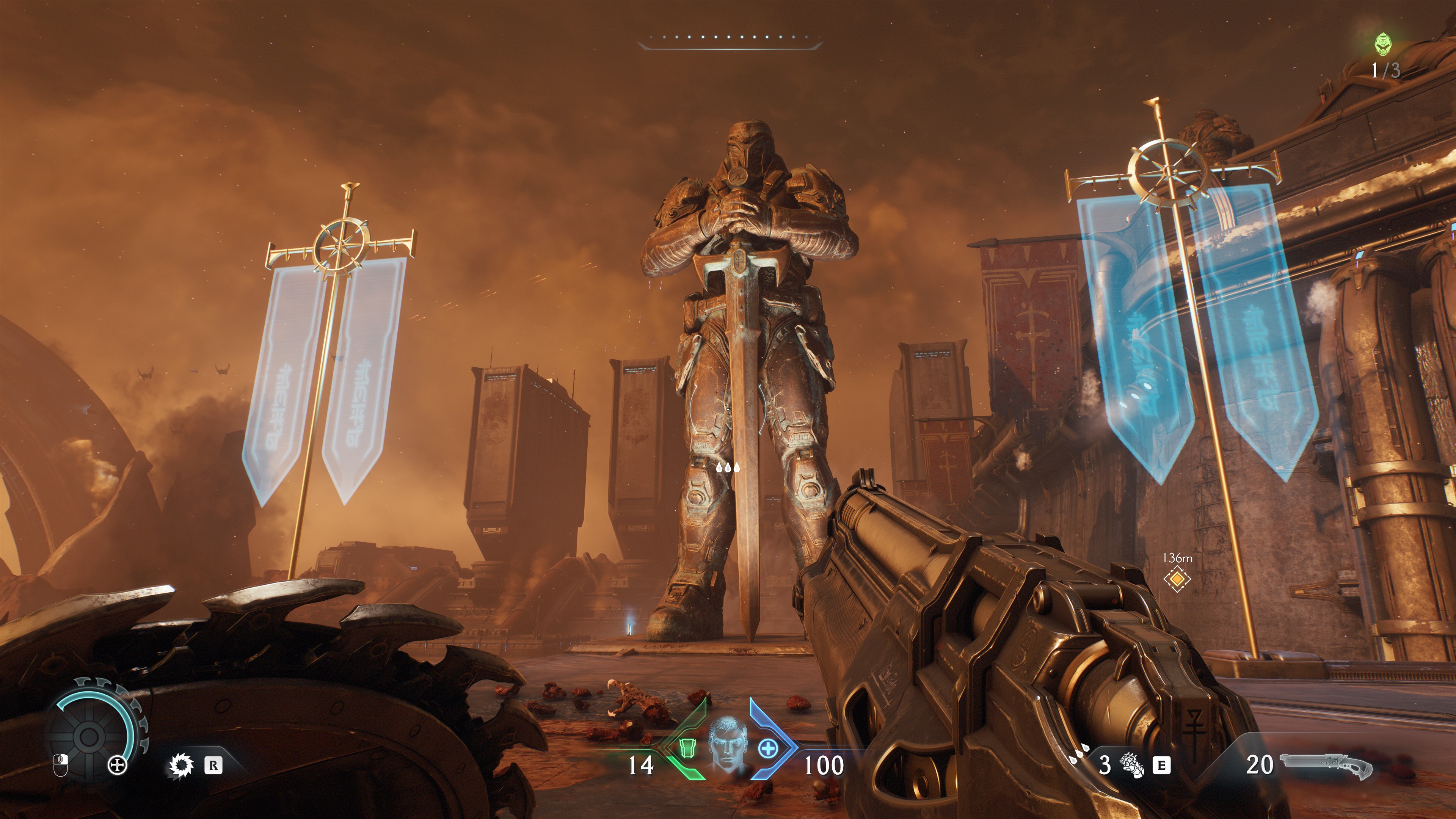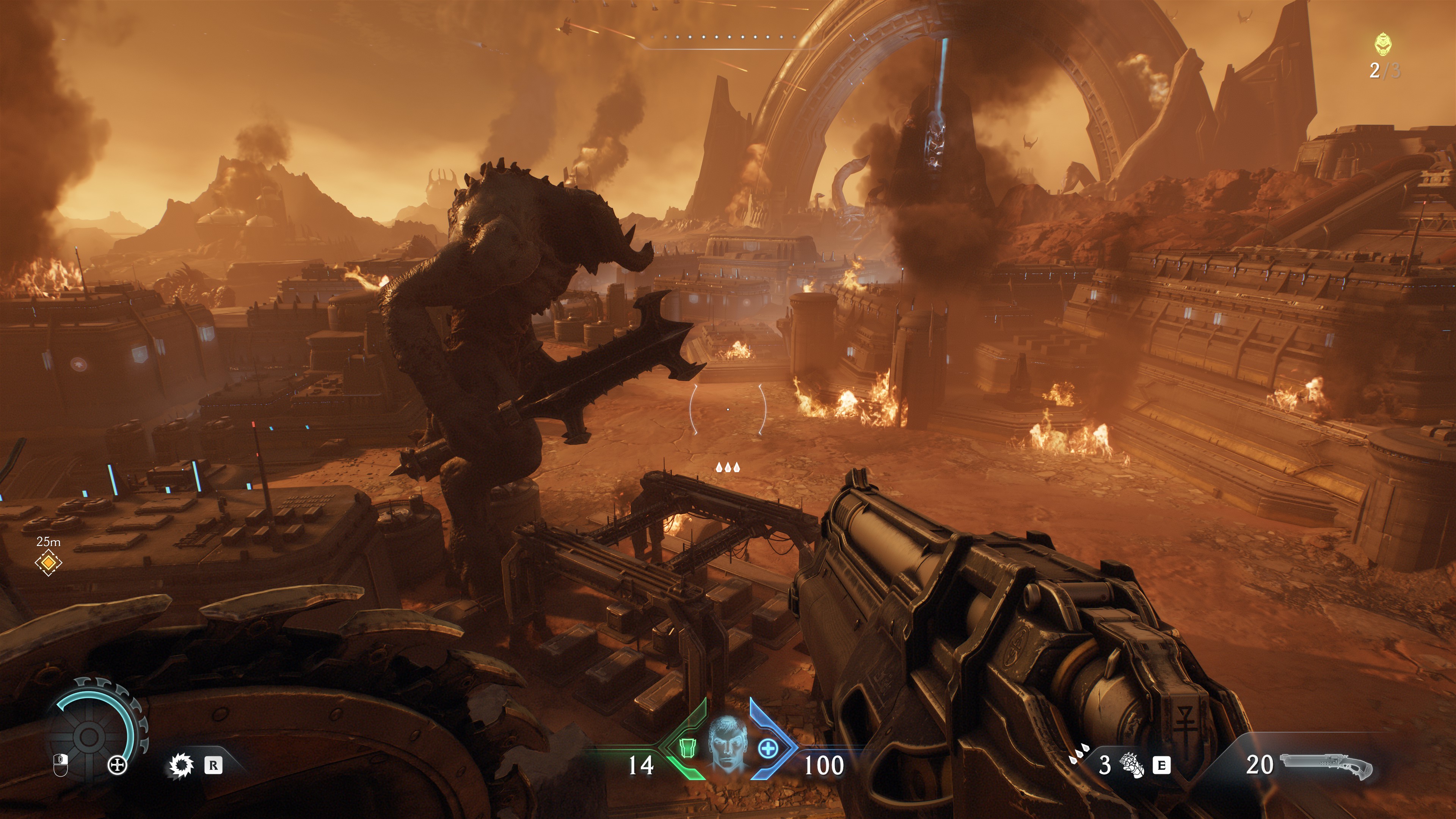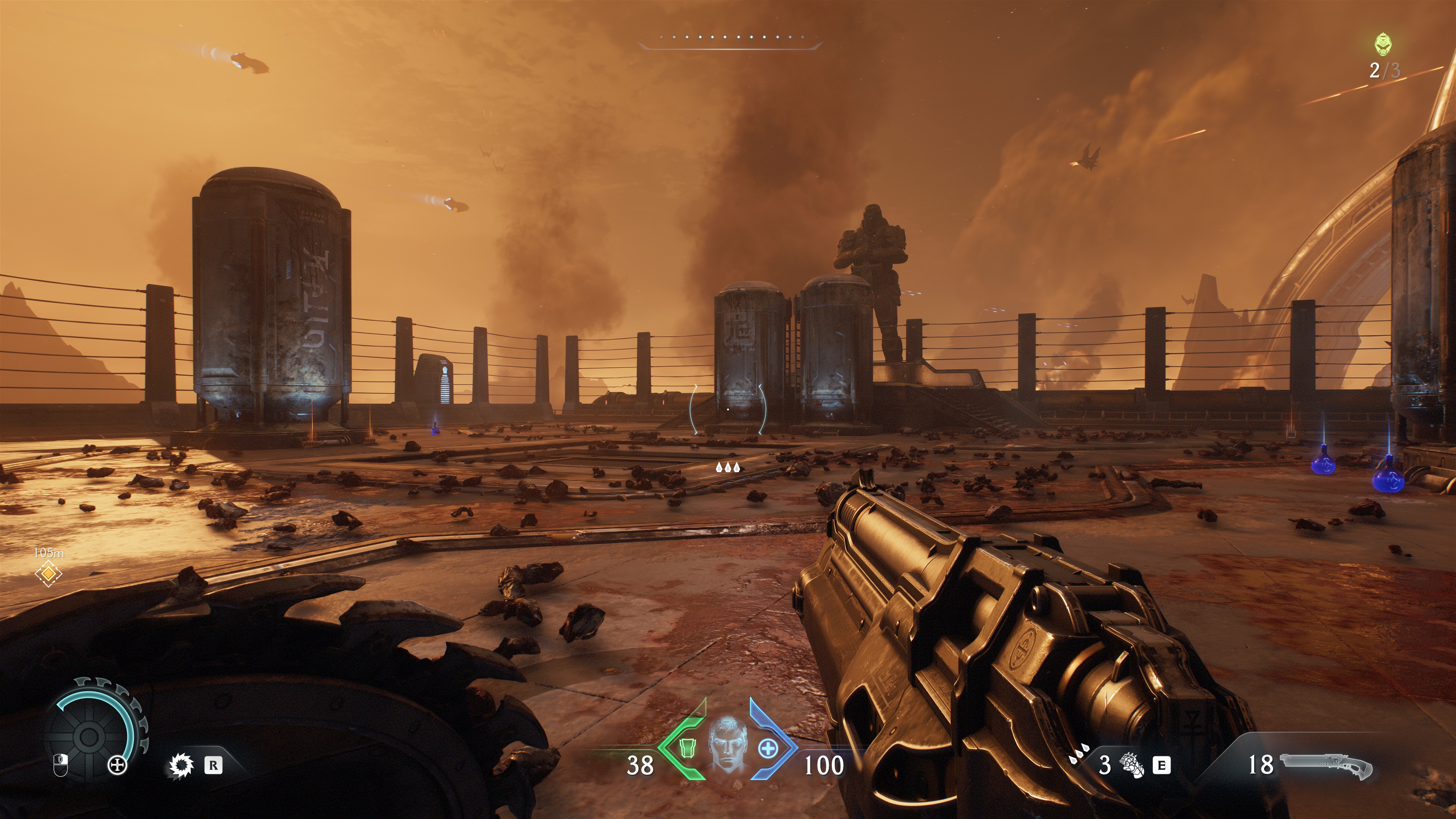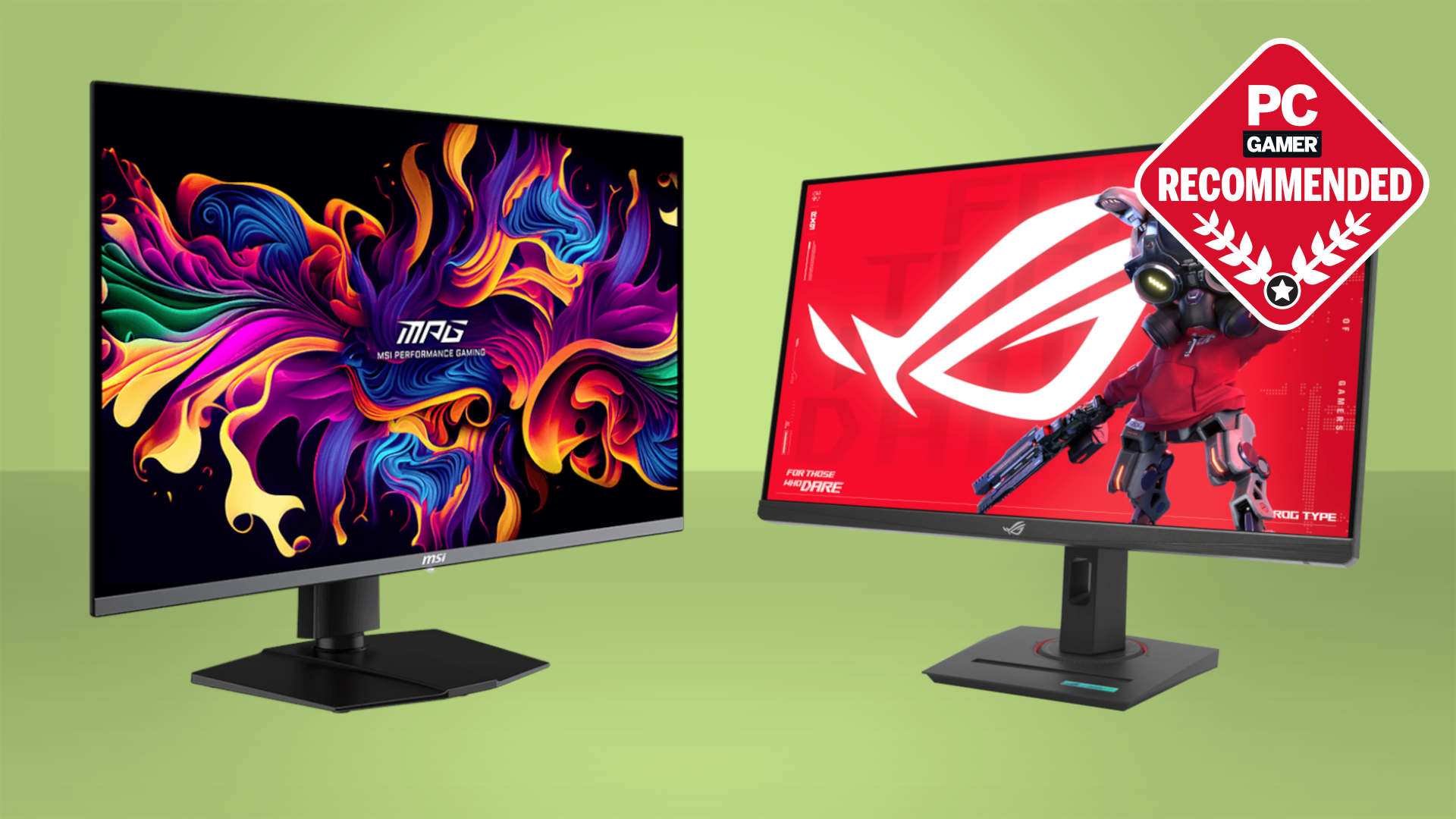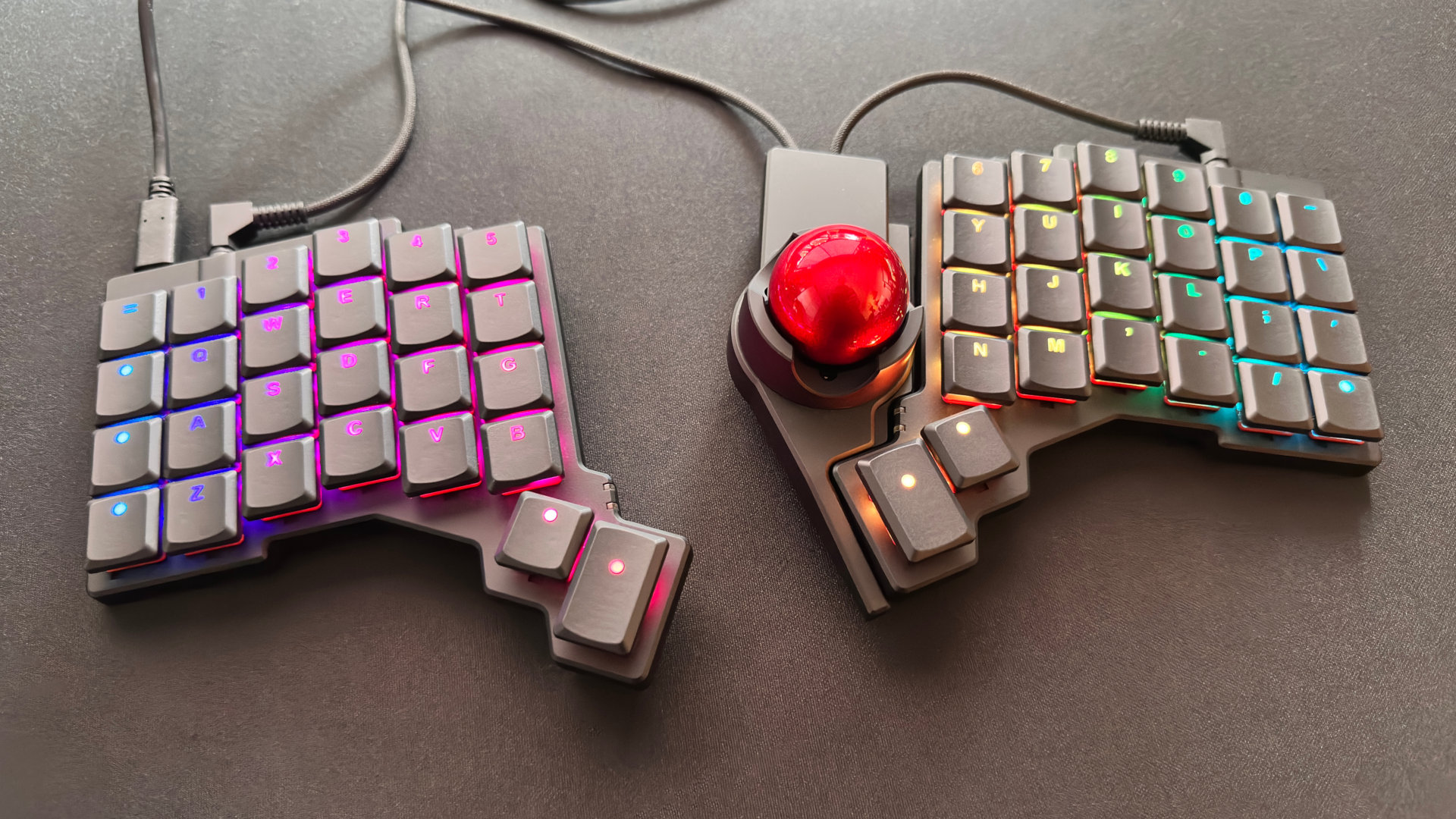Doom: The Dark Ages PC performance analysis: Always-on ray tracing isn't a problem and even a cheap gaming laptop copes just fine
Though once path tracing makes an appearance, all bets will probably be off.
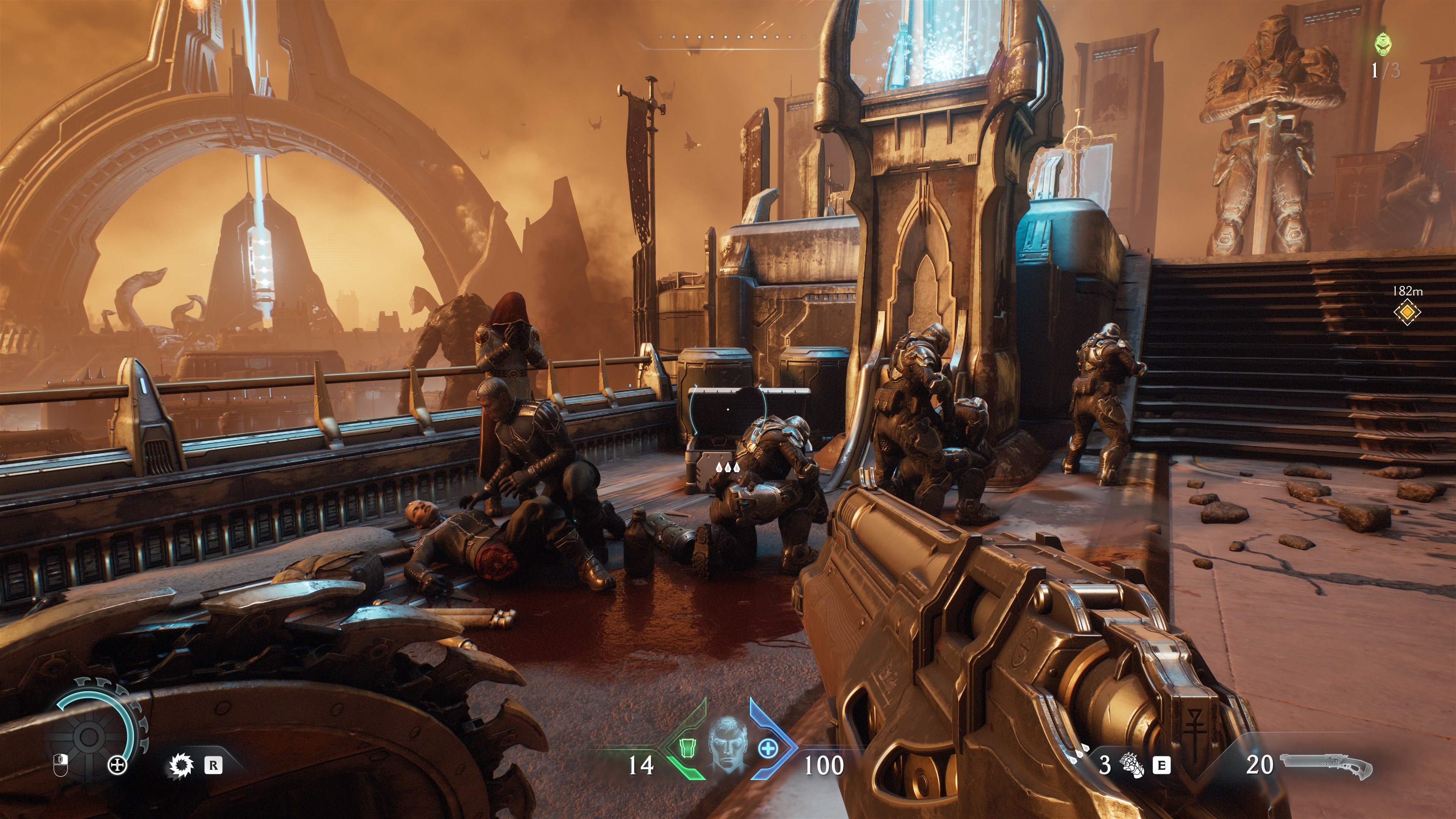
Doom has been around so long—32 years and counting—that you'd be forgiven for thinking that developers id Software must have produced hundreds of entries for the franchise on PC. The shocking truth is there have just been five, if one ignores all the third-party versions, expansion stuff and rejigged editions. And it's been five years since the last one, Doom Eternal, graced our gaming rigs. Well, it's back again and Doom: The Dark Ages is the first Doom game to be fully ray traced, all the time.
If that's got you worried about performance or the necessity for blurry upscalers and wonky frame generation, then let me allay those fears now—Doom: The Dark Ages runs pretty well across a decent range of PC configurations, though the entry requirements are a little on the steep side.
First of all, you need a GPU with dedicated ray tracing hardware. For AMD users, that means an RX 6000-series graphics card or newer. In the case of Intel, both generations of the Arc range will do, and for Nvidia fans, any RTX card will cut the mustard. Well, not quite any card because Doom: The Dark Ages also requires 8 GB of VRAM as a minimum.
Actually, it doesn't and I'll prove this shortly. What you do need, though, is a decent platform around your graphics card. While Doom: The Dark Ages isn't super heavy on your CPU, it does need to be reasonably new and, ideally, one with 12 threads or more. But enough chitter-chatter, let's go and see how well the new Doom actually runs.
Test PC specs
- Acer Nitro V 15 (Gaming mode), Ryzen 7 7735HS, RTX 4050 Laptop (75 W), 16 GB DDR5-4800
- Core i7 9700K (65 W), 16 GB DDR4-3200, GeForce RTX 2060
- Ryzen 5 5600X (65 W), 16 GB DDR4-3200, GeForce RTX 3060 Ti
- Ryzen 7 5700X3D (105 W), 32 GB DDR4-3200, Radeon RX 6750 XT
- Core i5 13600K (125 W), 32 GB DDR5-6400, Radeon RX 7900 XT
- Core Ultra 7 265K (250 W, 200S Boost), 48 GB DDR5-8000, GeForce RTX 5070
- CyberPowerPC/MSI, Ryzen 7 9800X3D (120 W), 32 GB DDR5-6400, GeForce RTX 5090
- Monitors: Acer Nitro XV282K KV / MSI MPG 321URX
- Operating System: Windows 11 24H2
- Drivers: Adrenalin 25.19.09.01 / GeForce Game Ready 573.16 (both pre-release)
To get a measure of how Doom: The Dark Ages runs across a range of gaming PCs, I used Bethesda's PC system requirements to choose what systems to test it on. With ray tracing permanently used and no shader-based replacement to fall back on, that meant waving goodbye to my faithful old Radeon RX 5700 XT as the base GPU.
The lowest spec ray-tracing capable GPU I could use was a GeForce RTX 2060. This, along with the Core i7 9700K platform it was housed in, is below the minimum system requirements but they're only guidelines, not hard and fast rules! The same is true for the RTX 4050 laptop, as both it and the older Turing GPU only have 6 GB of VRAM. However, I wanted to compare the two graphics chips to see if Nvidia's advances in ray tracing overrode the differences in CPU and VRAM amounts.
I used the starting phase of the second chapter, up to the first locked door in the level, as my test area of choice. There are other sections of the game where the performance is lower than what you'll see below, but equally, there are plenty of sections where Doom: The Dark Ages runs faster. Overall, the area I've used is a reasonable representation of the whole game, though I've not checked out every section yet.
One important thing to note with the new Doom is that the engine doesn't skip frames when running slowly. Essentially, the game's internal clock is somewhat tied to the frame rate, and when the latter is below 30 fps, the game becomes increasingly treacle-like, like everything is running in slow motion.
It seems like the engine is capped at 60 fps, because any frame rate around this level feels sharp and snappy. Oddly, going much higher than this doesn't feel any better—in fact, between 90 and 120 fps, Doom: The Dark Ages feels a tad disjointed. It's not lagging or stuttering in any way, and no performance metric agrees with the feeling, but at 120 fps, it doesn't feel as silky smooth as you'd expect.
Keep up to date with the most important stories and the best deals, as picked by the PC Gamer team.
Doom: The Dark Ages has six graphics presets—Low, Medium, High, Ultra, Nightmare, and Ultra Nightmare. However, the last two in the review code were essentially inactive, as they'll be properly used when id Software releases a path tracing patch later.
For testing, I used two pre-release drivers from AMD and Nvidia, as Bethesda recommended that these would ensure the game would run as glitch-free as possible. I didn't experience any crashes, but the Adrenalin drivers refused to work with MSI Afterburner (so I resorted to using Intel's PresentMon for some of the upscaling performance videos), and both sets occasionally threw up the odd rendering hiccup.
Low quality preset
As with all my performance analysis pieces, I started with the Low preset and left the rest of the graphics options on their default settings. This includes TAA for anti-aliasing and a texture pool size of 2048 MB (more about this setting later). Before we dive into the performance results, just watch the above video of a test run with the Low preset and then skip ahead and view that for the Ultra preset.
Can you see any difference? There are some, but you have to really look for them, and in some ways, it's really great that id Software has made Doom: The Dark Ages look as good as it does on the lowest of settings. On the other hand, it makes me wonder what the point of the other presets is—what use is there in having all those individual graphics options, when they barely seem to change anything?
That oddity aside, the new Doom runs pretty well across the board at 1080p Low. I know that's to be expected, but with ray tracing used everywhere, there was always a chance that it wouldn't be great, even though Indiana Jones and the Great Circle runs pretty well, and that's always ray traced, too (and powered by id Tech 7).
However, things take an interesting turn once the resolution increases to 1440p and 4K. The RTX 4050 laptop copes fine at 1080p, but adding more pixels just tanks the performance. Now that is to be expected, as every pixel will just generate more rays to be processed and the RTX 4050 isn't designed to handle more 1080p.
Now, you might think that another issue is the laptop's 6 GB of VRAM. Doom: The Dark Ages has a dedicated setting for the texture pool, and it defaults to 2048 MB—that means 2 GB of VRAM are being used for streaming textures, leaving just 4 GB for everything else. Doesn't sound like it's enough, right?
As you can see above, changing the texture pool size doesn't make much difference. So, even though Bethesda recommends 8 GB of VRAM as being the absolute minimum to run the game, as long as you keep to 1080p and you're using a recent generation of GPU, 6 GB isn't as big a barrier as you might think.
The RTX 4050 might be able to run Doom: The Dark Ages faster if it had more VRAM but I don't think anyone's really going to complain about getting over 60 fps, when the Low preset looks fine.
Medium quality preset
Switching to the Medium preset improves the quality and accuracy of ray-traced reflections, but that's about it for immediately noticeable graphics gains. There are other improvements, such as better lighting and shadows, but nothing to make you go 'Wow, this is so much better!' At least the performance hit is very small, going from Low to Medium.
It's so small, in fact, that you might as well just use Medium as the 'Low' preset—you get pretty much the same frame rate as you get with the actual Low preset, but with nicer reflections. That's as long as you stick to 1080p or 1440p, as 4K really grinds down the frame rate.
The RTX 5090 test rig loses just over half its performance when going from 1080p to 4K, with the Medium preset, but while that may sound like a bit hit, don't forget that 4K has four times more pixels than 1080p. That's a healthy amount of extra rays to trace and shade, so the performance drop is understandable.
One interesting problem occurred with the RTX 2060 test rig, with the Medium preset (and it repeated for High and Ultra). Basically, the game refused to register shield hits for ticking off a quest marker—all of the animations, kill sequences, etc would run as normal (well, as normal as you'd expect for 26 fps) but they'd just not be recognised as having taken place.
The solution was to use upscaling, and we'll look at what that does for performance shortly.
High quality preset
I expected there to be some bigger changes in the graphics quality, going from Medium to High, but as you can see in the above video, there's little to separate the two. Just as with the previous preset, the drop in frame rate is small—enough that one might be tempted to consider High as basically the 'Medium' preset.
But hang on, isn't Medium the new 'Low'? Surely that would make High the same as Low! I'm exaggerating, of course, as the RTX 3060 Ti test rig runs 20% slower, on average, at 1080p and 22% slower at 1440p (when comparing the High preset to the Low one). That's hardly an insignificant decrease, but the Ampere-powered GPU is still managing to pull over 50 frames per second.
Just as with the other presets, 4K Dooming is the preserve of the RTX 5090, though the RX 7900 XT isn't that far off 60 fps with the Low preset—that's pretty impressive considering that this native rendering and AMD's GPUs have never had the greatest of reputations when it comes to ray tracing.
At the very least, the closeness of the presets—in terms of graphics and performance—means that there's no need to worry about 'best settings' and other tweaks. Just fire Doom: The Dark Ages up at Medium or High, and then adjust the resolution (either natively or via upscaling) to get the performance you want.
Ultra quality preset
At the time of testing, the Ultra preset is the highest graphics option, and it should come as no surprise that Ultra doesn't look a whole lot better than the High preset (or Medium, for that matter), given what we've seen so far.
The options are changing something, otherwise, there would be no performance difference whatsoever between the presets, and it's entirely possible that the changes are far more noticeable in other regions of the game. However, I'm still conflicted over how I feel about it all. Let's take a look at the ray-traced reflections change with each preset, because it's too hard to pick this out from the videos.
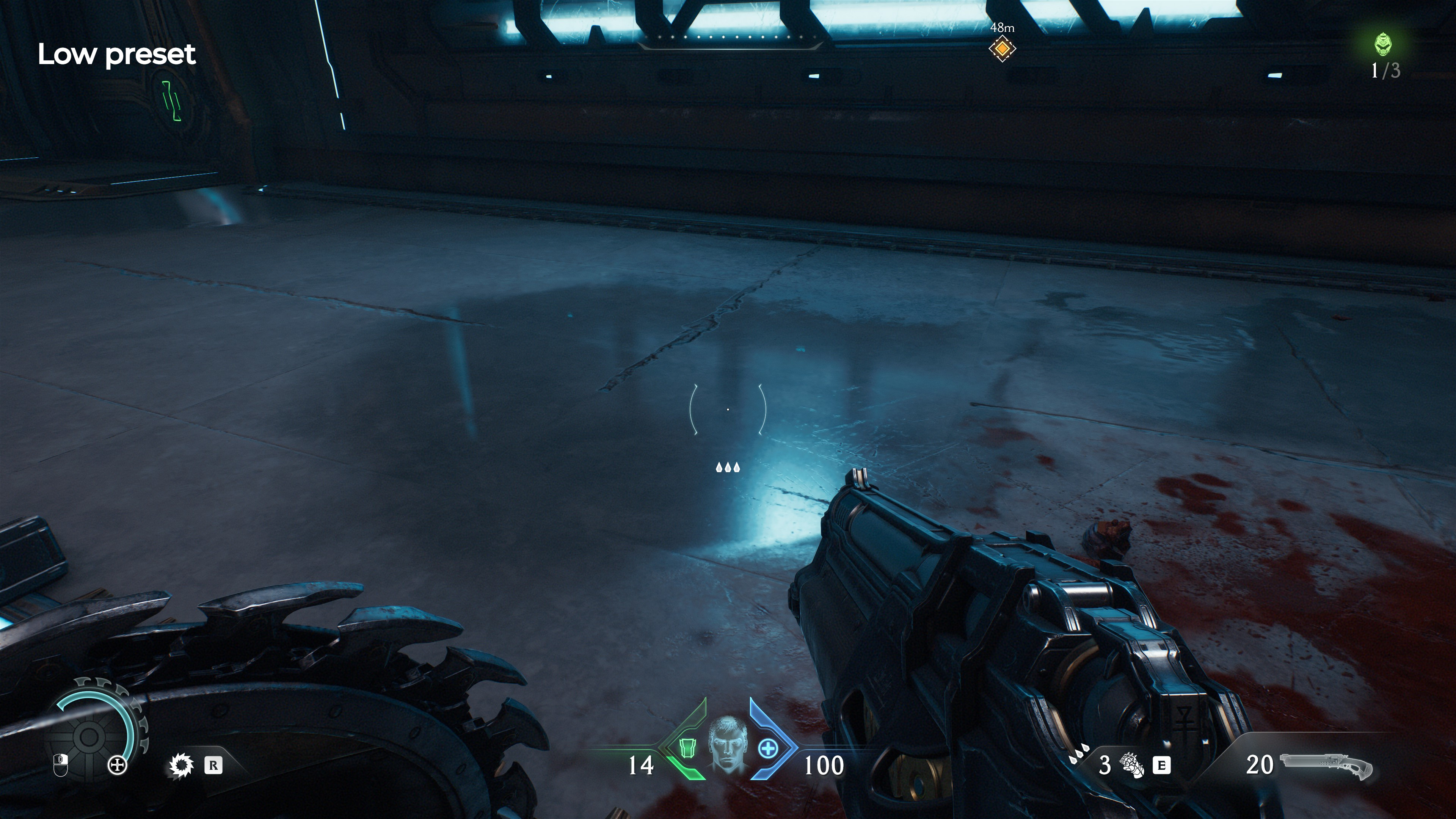
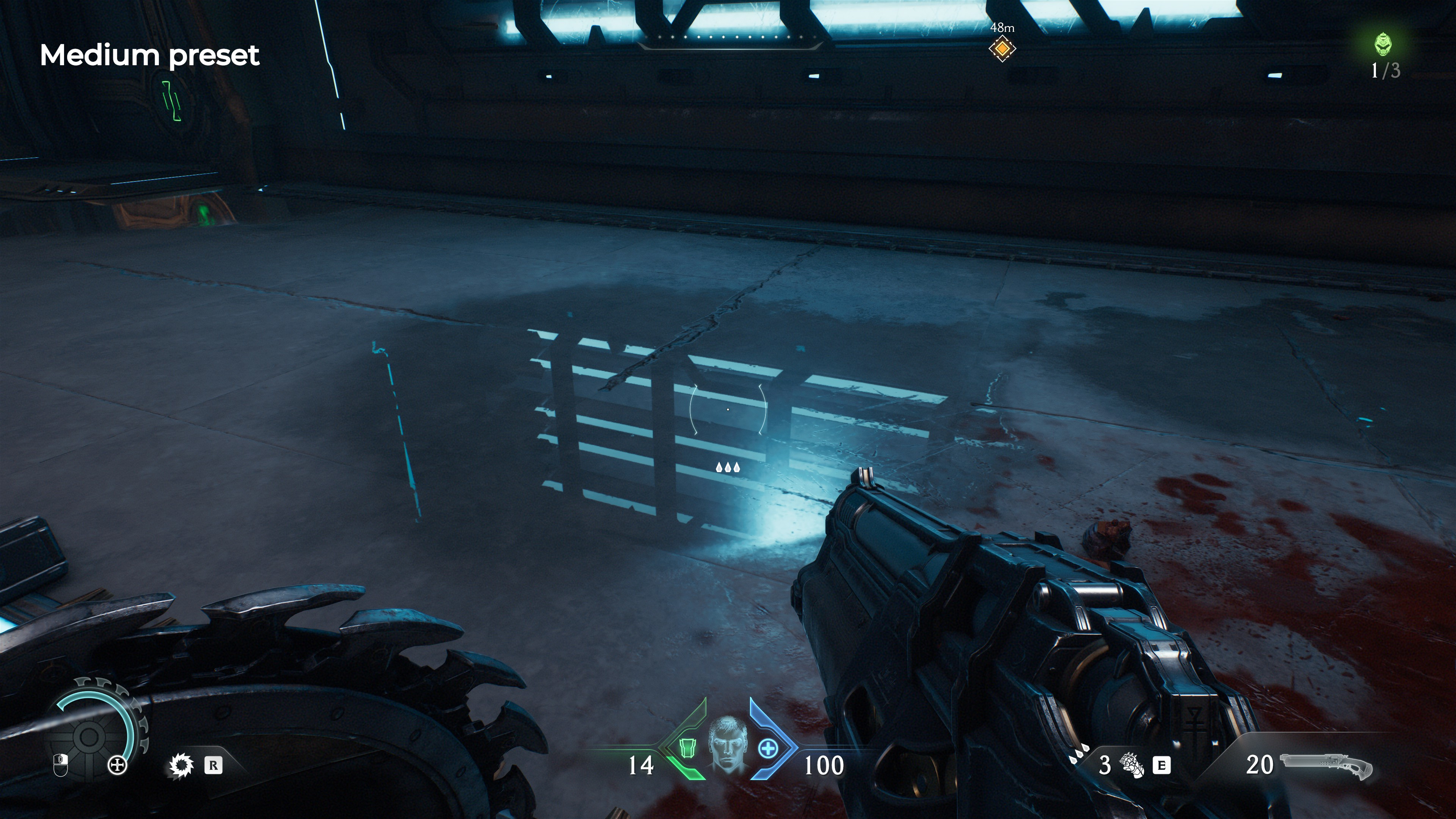
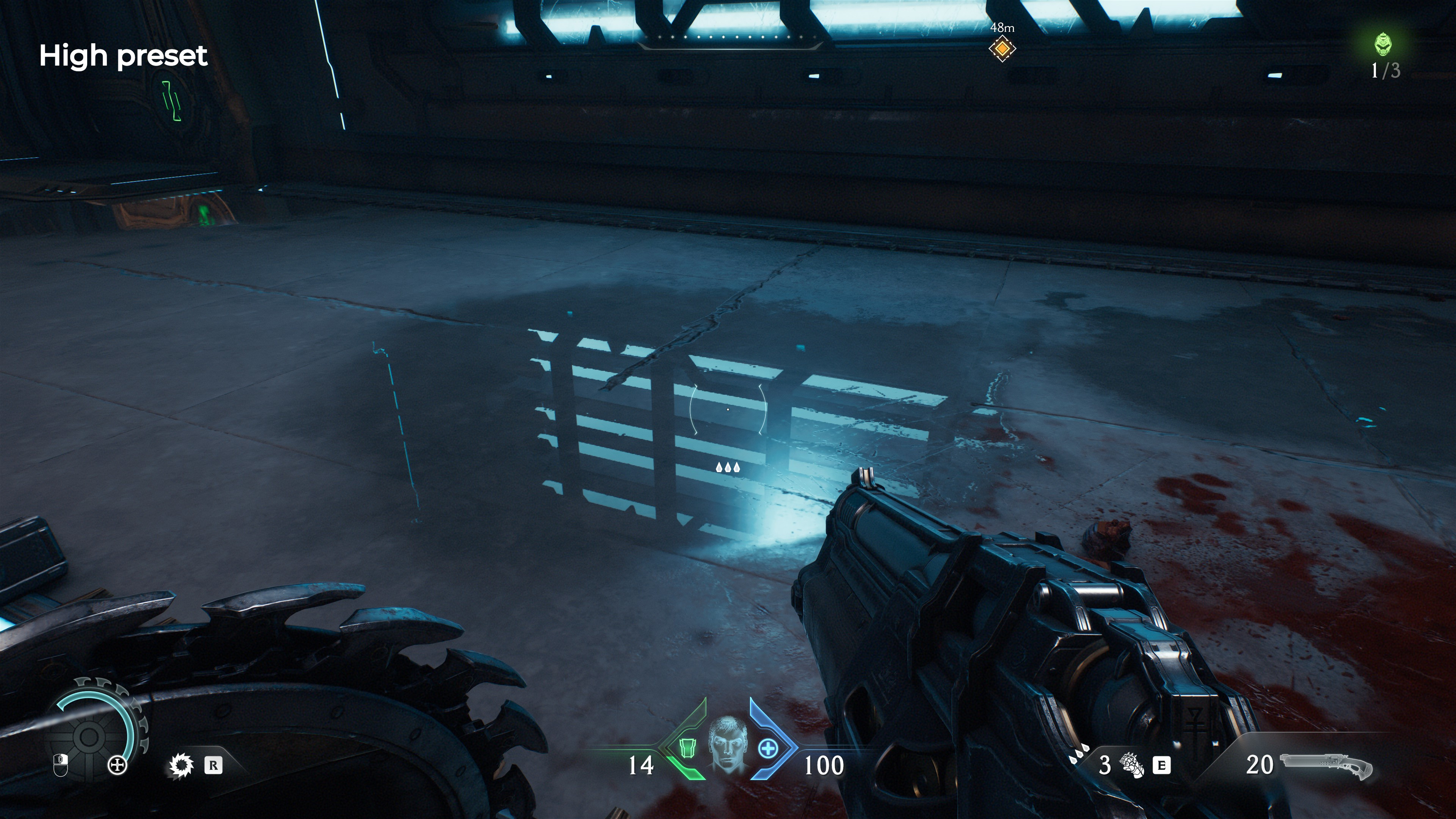
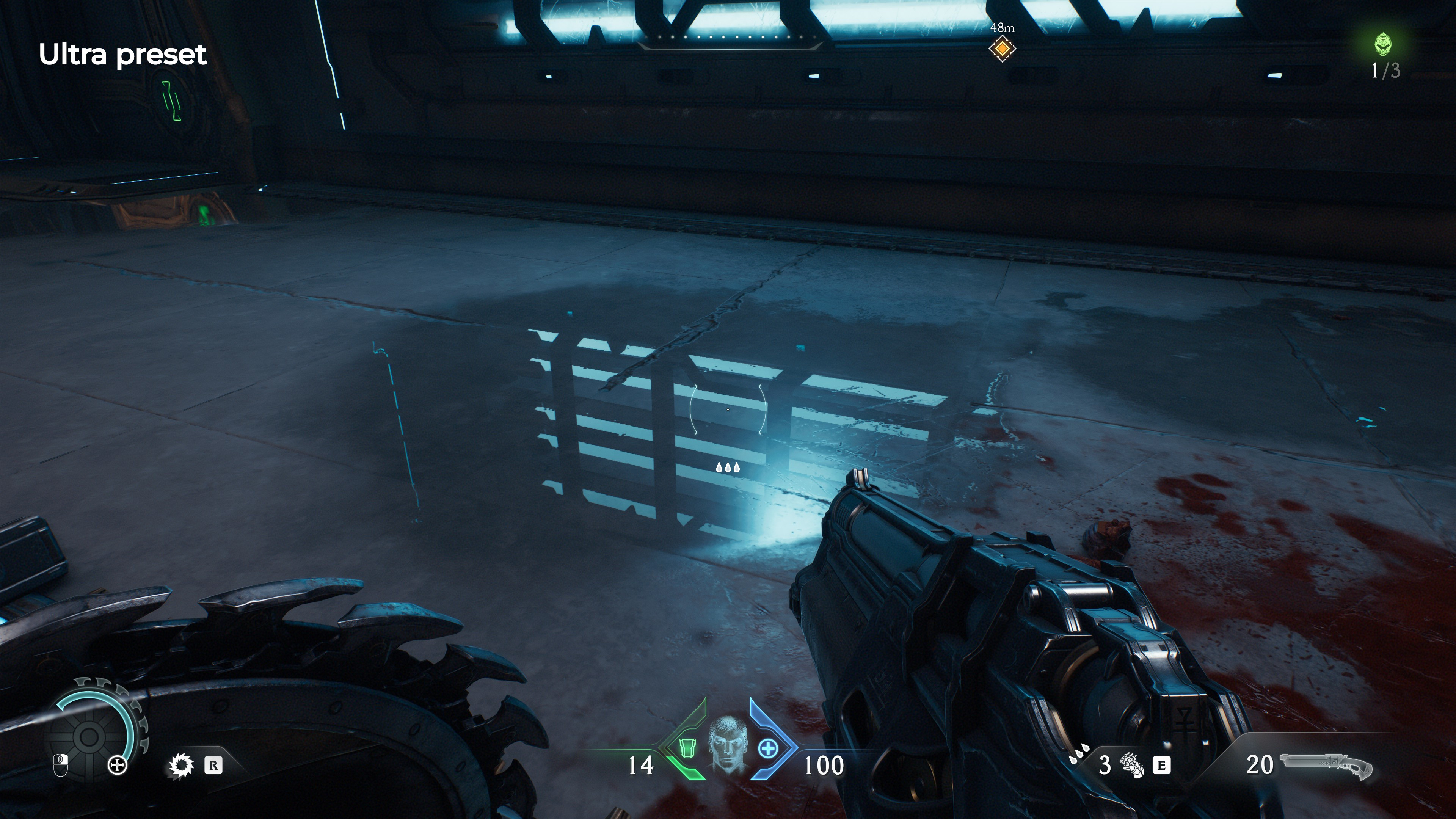
Note that with the Low preset, you don't get much in the way of the environment appearing in the reflections, just the lighting. But if you scroll across to the Medium preset and then follow through to the Ultra preset, you'll see that you get everything with all four options above Low.
Of course, if one stops stomping around and peers closer at the scenery, other differences do start to show up. For example, the Low preset disables self-shadowing, whereas the other presets produce increasingly better levels of shadows and lighting.
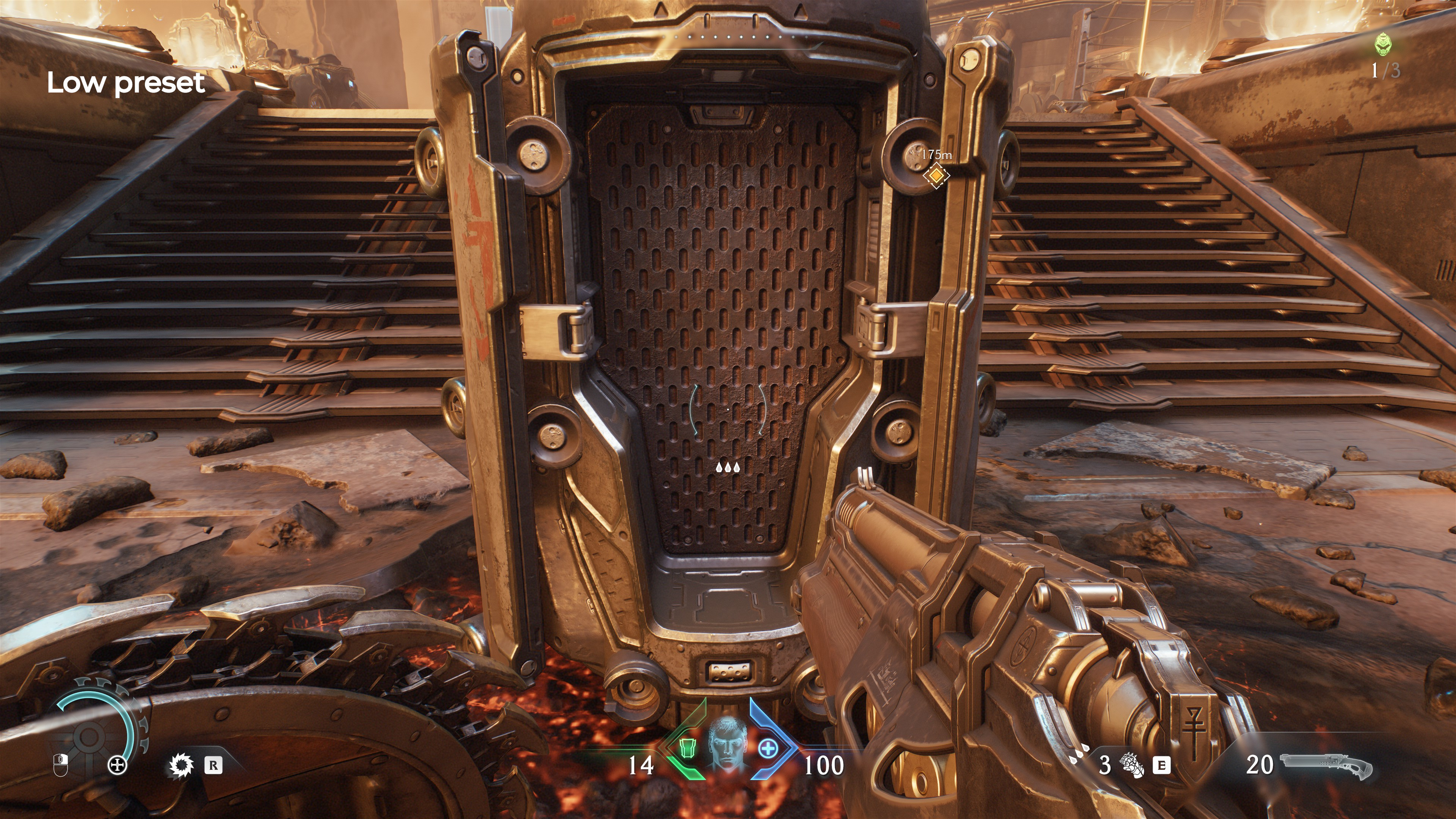
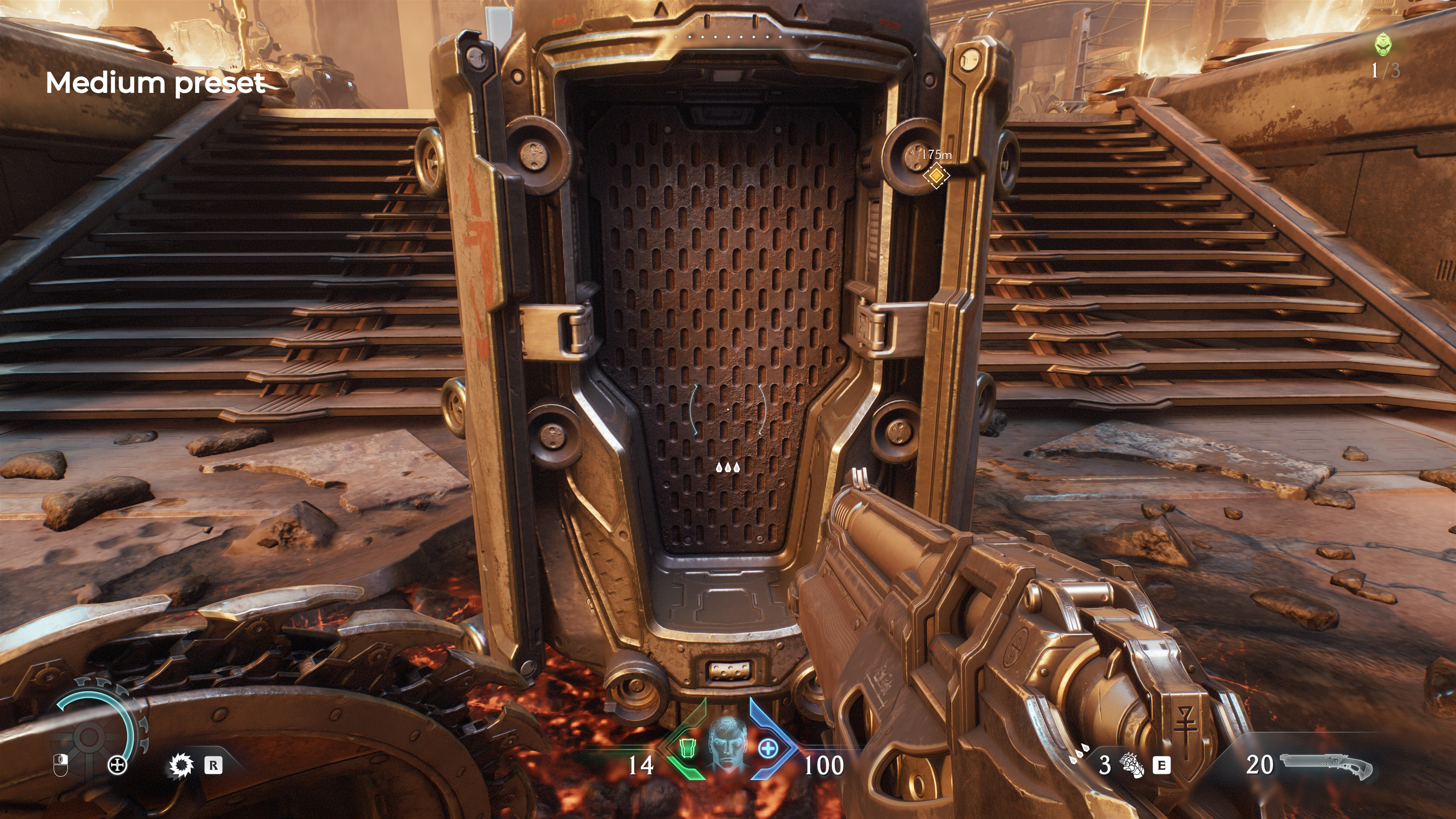
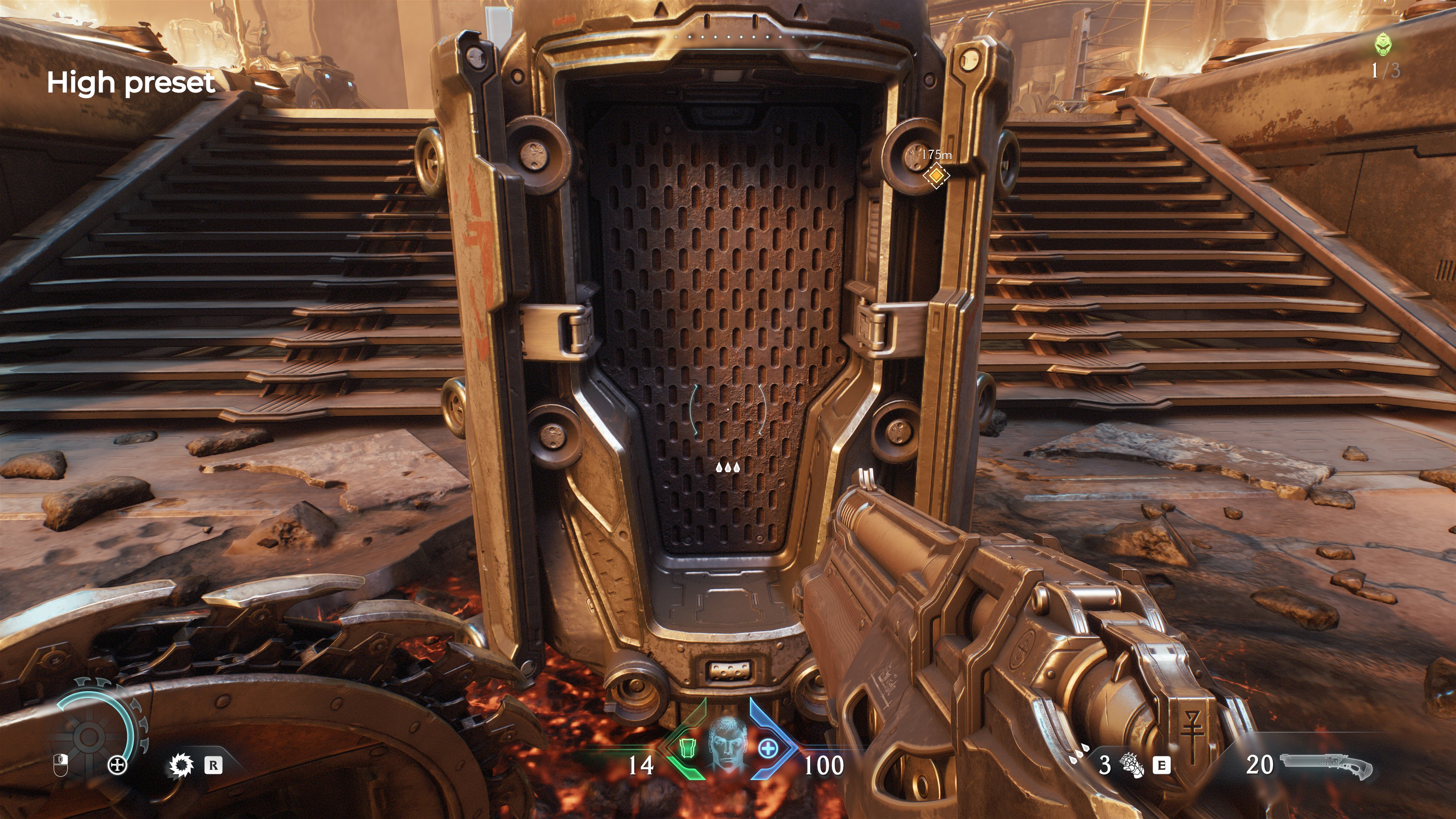
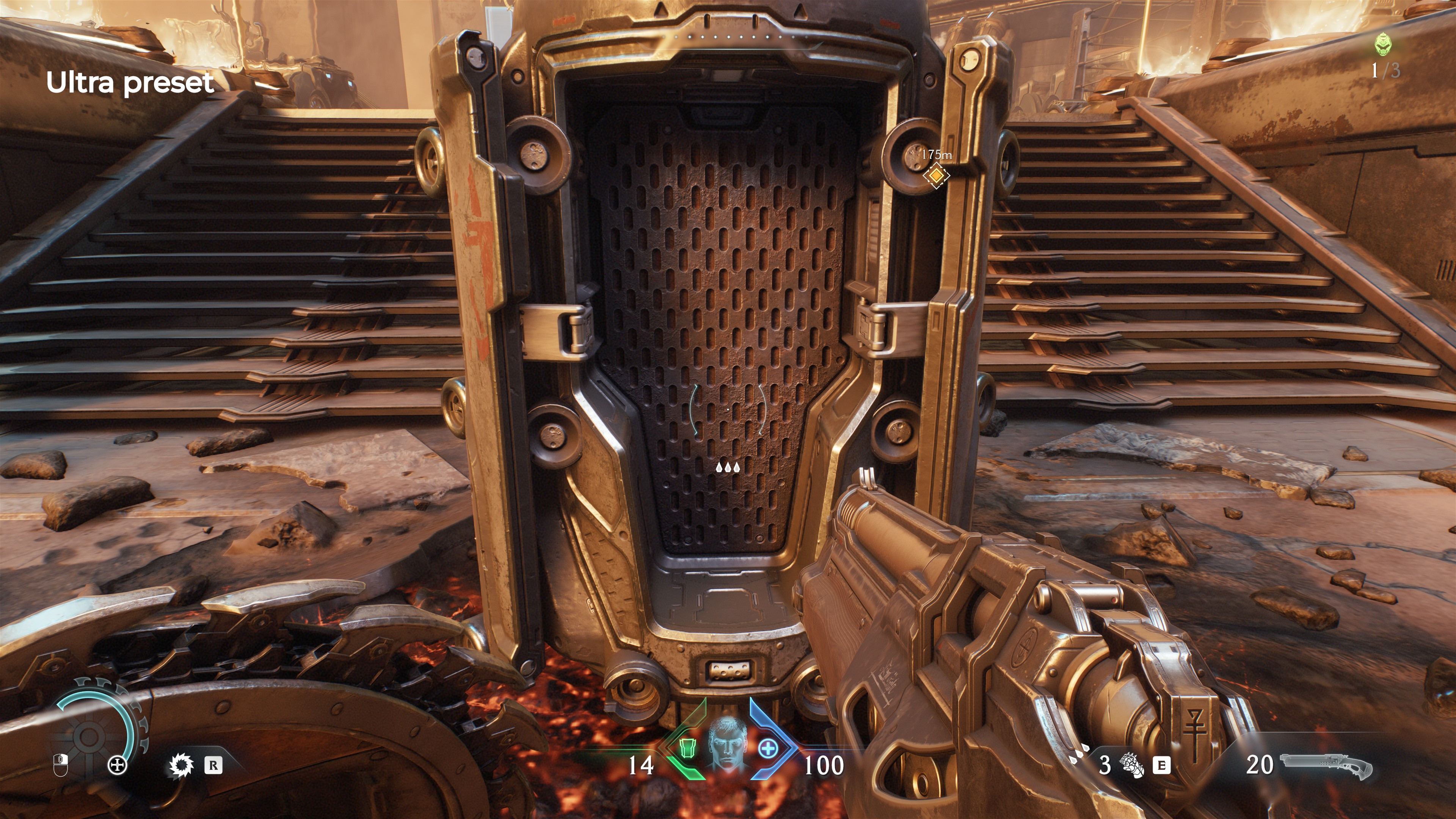
Just as with reflections, once you're past the Low preset, the graphical improvements are relatively small, especially if you compare Medium to High, and then High to Ultra. There are almost no changes to the textures used in the above screenshots, either.
On the one hand, it's great that Low settings look pretty decent, and Medium is arguably good enough to be used by everyone. The upshot of this is that it means you don't need a super-expensive, high-end graphics card to enjoy a visual treat in Doom: The Dark Ages.
But on the other hand, it's disappointing that Ultra doesn't really stand out from the crowd, compared to High or Medium. Perhaps when we get to see path tracing in action, it will be a different story, as id Software might also include higher texture resolutions.
I explored how the size of the texture pool affected the performance of the RTX 3060 Ti with the Ultra preset, as this was the only 8 GB card I've used in this analysis. There's a noticeable drop in the 1% low frame rates once it's set to 3 GB or more, even at 1080p, but you might as well just leave it at the default 2048 MB setting because higher values don't really improve the graphics that much.
At its lowest value of 1536 MB, you can definitely see where textures are being pulled in because they're not present in the pool, but with chaotic battles everywhere, you don't really have much time to sit back and worry about it.
Overall, there's no catastrophic drop-off in performance with the Ultra preset, perhaps because of the small graphical improvements over High. Even the RTX 4050 laptop is still surprisingly playable—you're better off using a lower preset, though, to reduce the amount of asset streaming taking place.
At 1080p, all bar the slowest two setups push 60 fps, or more, at 1080p; at 1440p, though, there are just too many rays flying around for the RTX 3060 Ti and RX 6750 XT to cope with. 4K is for the RTX 5090 only, but don't forget that this is still all at native rendering. Enabling upscaling and frame generation paints a very different picture.
Upscaling performance
Doom: The Dark Ages supports AMD's FSR, Intel's XeSS, and Nvidia's DLSS upscaling systems, but it's fair to say that the latter's implementation is far superior to the others—in part because all versions of DLSS are using Nvidia's latest transformer model for the upscaling. It's not id Software's fault that AMD's latest tech isn't present, though, as currently FSR 4 doesn't support Vulkan (the graphics API used in this game).
However, FSR 3.1 does support Vulkan, and as far as I can tell, that's not being used. Or if it is, then it's disappointing that id Software hasn't decoupled the upscaler and frame generation mechanisms. Yes, that's right—if you have a GeForce RTX 20 or 30 series graphics card, you've got no way to use frame generation.
This might all change in future patches, and I hope it does, because Doom: The Dark Ages is one of the few games where frame generation is not only useful, but its inherent input lag is barely noticeable. That said, there is one case where you don't want to enable frame generation.
DLSS Quality upscaling
Ryzen 7 7735HS, GeForce RTX 4050, 1080p, Medium preset
No, those results aren't a mistake—I tested and checked them multiple times, and used different programs to record the frame rates. They all agreed with the fact that the use of DLSS frame generation on the RTX 4050 actually makes things considerably worse.
I know what you're thinking and it's that with frame generation enabled, the RTX 4050 just doesn't have enough VRAM. However, having recorded the memory usage via PIX on Windows, DLSS Balanced with Frame Generation actually uses slightly less VRAM than native rendering does, at 1080p Medium preset.
What could be happening is that PIX isn't reporting VRAM usage correctly, or at the very least, it's not showing the full picture as to how much asset streaming is taking place. But whatever the explanation is, you don't need to use frame generation, as the little laptop GPU pulls some impressive frame rates once DLSS upscaling is used. Given that the CUDA, Tensor, and RT cores in the 4050 are exactly the same as those in, say, a 4090 (just a lot fewer of them), it makes sense that it should do well once you give fewer pixels to ray trace.
DLSS Quality upscaling
Ryzen 5 5600X, GeForce RTX 3060 Ti, 1080p, Ultra preset
Since the FSR implementation doesn't offer upscaling and frame generation separately, the RTX 3060 Ti and RTX 2060 only get to use DLSS upscaling. But just as with the RTX 4050, the loss of frame generation isn't... well... a loss, and the Ampere GPU easily copes with Doom: The Dark Ages on the Ultra preset.
That's at 1080p, of course, and increasing the resolution to 1440p puts a much bigger strain on the graphics chip. DLSS can make it playable, bringing the frame rate up to the 60 fps mark, but you won't see much over the 75 fps region, even with DLSS Performance.
The old RTX 2060 can't get anywhere near 60 fps, but that's partly down to the Core i7 9700K it was paired with. It doesn't seem to be down to a lack of threads (it's an 8-core, 8-thread CPU) but more a case of the whole system not having enough performance to ensure the 2060 is never left waiting for data or instructions.
Even so, with DLSS Balanced, you get a reasonable 44 fps on average, without too much fuzziness to the graphics. That might not seem very playable, but it's actually okay—it is a touch laggy when the game's world is packed with enemies, mind.
FSR Performance upscaling + 2X frame generation
Core i5 13600K, Radeon RX 7900 XT, 4K, Ultra preset
Despite my criticism of id Software not separating FSR's upscaler and frame generator, I have to say that the actual quality of AMD's algorithms is really very good in Doom: The Dark Ages. Not quite on a par with DLSS, but during actual gameplay, you're never going to notice.
With FSR Performance and frame generation enabled, the Radeon RX 7900 XT pulls off some very impressive frame rates. It's in that slightly odd zone of being a little too fast, leading to that disconnect between smooth rendering but somewhat stilted feedback, but using FSR Quality instead easily gets around that.
The star of the show has to be the RX 6750 XT. AMD's RNDA 2 architecture isn't the best at ray tracing, though you wouldn't think that here. Using FSR Balanced with frame generation results in a near-perfect blend of fast rendering and snappy inputs.
DLSS Quality upscaling + 3X frame generation
Ryzen 7 9800X3D, GeForce RTX 5090, 4K, Ultra preset
As good as the little RX 6750 XT is with FSR, I think it's fair to say that Doom: The Dark Ages is the poster child for Nvidia's DLSS 4. Ray reconstruction wasn't available in the preview code (it'll appear in a later patch), but everything else is present, and the combination of DLSS upscaling, multi frame generation, and Reflex produces some truly ludicrous frame rates.
Whether one wishes to go down the road and argue that they're not real frame rates is another matter entirely, but even if you don't bother with frame generation, upscaling is well worth using. There's no perceivable loss in visual fidelity, even at 1440p DLSS Performance, although 4x frame generation does produce a little too much blurring on fast-moving objects.
The RTX 5090 is as good as you'd expect in Doom: The Dark Ages. Getting 90 fps on average at 4K Ultra without upscaling is something to behold, though how that will change once path tracing makes an appearance is anyone's guess.
Final thoughts
When it was announced that Indiana Jones and the Great Circle would be using ray-tracing all the time, I realised that the next iteration of the id Tech and Doom would almost certainly be doing the same thing, and that's exactly what we've got. It's certainly not the first game to be doing this, but it's arguably the first to run RT pretty quickly on GPUs that have traditionally struggled with ray tracing.
There again, when you look at the graphics in Doom: The Dark Ages more diligently, it's not as visually impressive as Alan Wake 2 or Avatar: Frontiers of Pandora. But these are slower-paced games than Doom, and one isn't really going to be spending time admiring the grim world around you when there are hordes of demons to wade through.
The 2016 reboot of Doom set the bar for excellent graphics and excellent performance, and while Doom: The Dark Ages is arguably not on the same level as that classic, it still looks pretty good and runs well for a fully ray-traced game. That said, the denoising isn't perfect, some of the textures are quite low in resolution, and the motion blur is rather overdone.
But while the gameplay choices might not be to everyone's taste (for me, the music is actually the biggest letdown), but the coding wizards at id Software have certainly produced a solid entry in the three-decade Doom franchise. If a cheap gaming laptop can pull 60 fps, then there's hope for us all.
And there aren't many game series you can say that about.

Nick, gaming, and computers all first met in the early 1980s. After leaving university, he became a physics and IT teacher and started writing about tech in the late 1990s. That resulted in him working with MadOnion to write the help files for 3DMark and PCMark. After a short stint working at Beyond3D.com, Nick joined Futuremark (MadOnion rebranded) full-time, as editor-in-chief for its PC gaming section, YouGamers. After the site shutdown, he became an engineering and computing lecturer for many years, but missed the writing bug. Cue four years at TechSpot.com covering everything and anything to do with tech and PCs. He freely admits to being far too obsessed with GPUs and open-world grindy RPGs, but who isn't these days?
You must confirm your public display name before commenting
Please logout and then login again, you will then be prompted to enter your display name.
